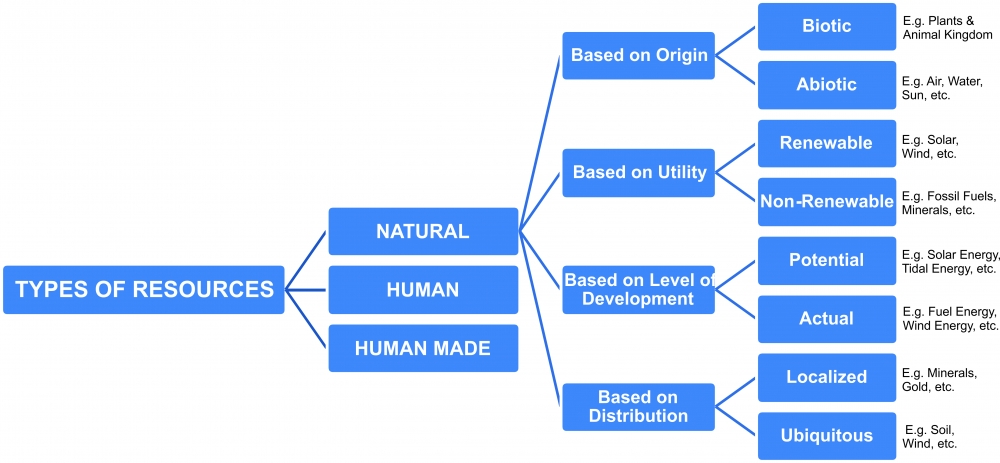Class VIII: Chapter 1 (Resources) Question & Answers
Distinguish between the following:
Q1. Natural and Human Made Resource.
Ans:

Q2. Biotic and Abiotic Resource.
Ans:

Q3. Potential and Developed Resource.
Ans:

Q4. Ubiquitous and Localized Resource.
Ans:

Short Answer Questions
Q5. What are the factors that determine the utility of any natural resource?
Ans: Following are the factors that determine the utility of any natural resource:
(a) The form in which the resource occurs.
(b) The place where the resource occurs.
(c) The efforts needed to process the resource.
(d) The cost of processing the resource.
Q6. Human beings are an important resources. Justify the statement.
Ans. Human resource consists of people. Human resource and its proper development are of great importance. The creative mind of humans and the desire to satisfy their need helped them to produce different products and services that we see, feel and observe in our day-to-day life. For example: iron ore was used to build tools, machines, etc.
People with healthy mind and body have great potential to produce anything that they desire. People can make the best use of nature to create more resources when they have the knowledge, skill and the technology to do so. That is why human beings are a special resource and they are the most valuable resource of the present time.
Q7. Define - conservation of resources and sustainable development.
Ans: (a) Conservation of Resources: Using resources carefully, judicially and giving them time to get renewed is called resource conservation.
(b) Sustainable Development: Balancing the need to use resources and also conserve them for the future is called sustainable development.
Long Answer Questions
Q8. Classify resources with examples.
Ans: Following is the classification of resources:

Q9. Distinguish between Renewable and Non-Renewable Resources.
Ans:

Q10. Why is the conservation of resources essential?
Ans: Using resources carefully, judicially and giving them time to get renewed is called resource conservation. It is very necessary to use the resources very carefully as they are part of our life support system. With the rapid growth of population, urbanization and industrialization there has been an increased demand and consumption of resources. This has led to the overexploitation and depletion of resources. To prevent misuse, overexploitation and depletion, the conservation of resources is necessary and it's the need of the hour. Incase if we don't conserve these resources than in our near future we will not be left be left with these resources which will make the survival of the human beings very difficult.
-----x-----X-----x-----




_4_o.jpg)
_1_o.jpg)